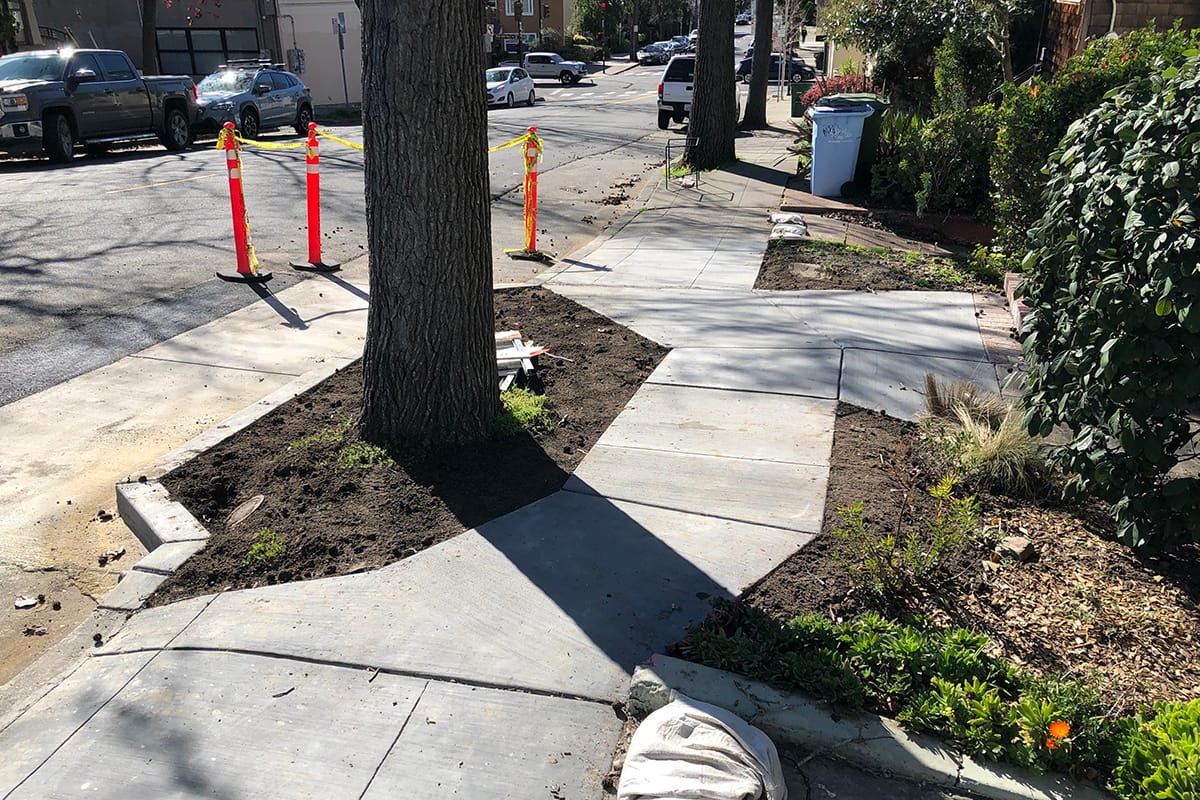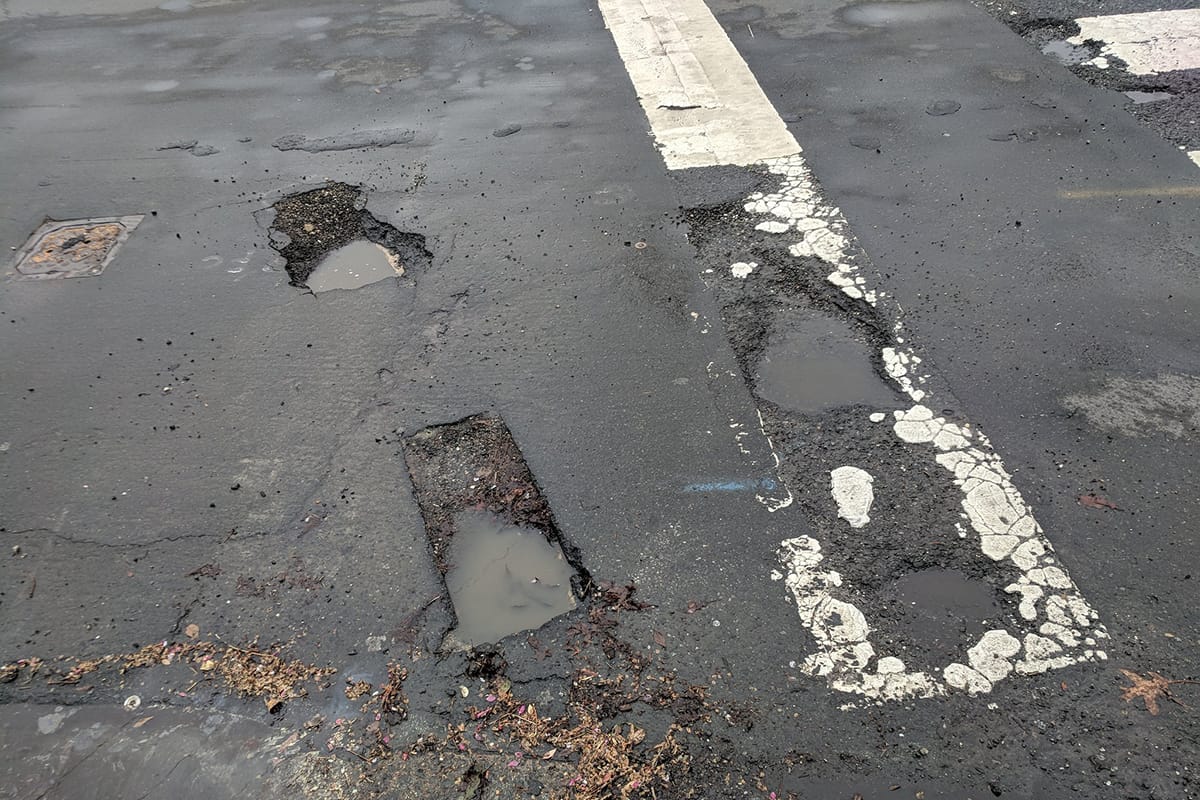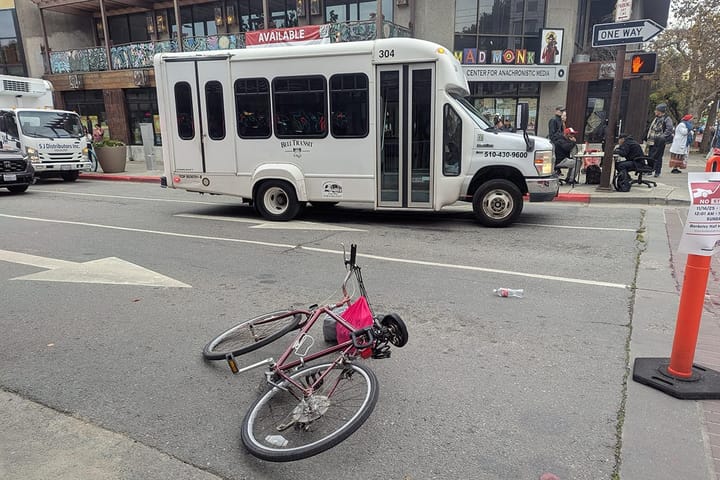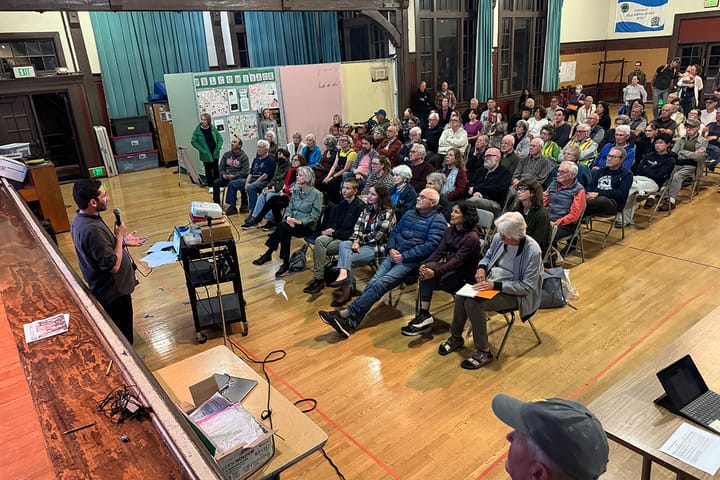What's happening with Measure FF, Berkeley's Safe Streets plan?
Measure FF is slated to provide nearly $270 million for Berkeley streets and sidewalks over its 14-year lifespan.

Work is forging ahead to prepare for a huge influx in spending on Berkeley streets and sidewalks thanks to Measure FF, approved by voters last year.
Measure FF money will nearly double city spending on street improvements which, "all told," is now projected to top more than $40 million annually, with help from the General Fund, Measure BB, the gas tax and grants.
"That's a significant scale up for us," said Berkeley Public Works director Terrance Davis during the city's most recent public update on the Measure FF "Safe Streets" initiative.
Berkeley voters approved Measure FF in November 2024, securing 61% of the vote, to boost street and sidewalk repairs, including pedestrian paths, as well as safety improvements and environmental infrastructure projects, throughout the city.
Since its approval, the city has been working to get the new initiative off the ground, Davis said.
"I call it sausage making," he told city officials. "It's just a lot of the administration that's necessary to really get ourselves in place to be able to deliver."
Measure FF is slated to provide nearly $270 million, including inflation, over its 14-year duration.
In recent months, the city has been working to hire three people, a project supervisor and two engineers, who will help make up a five-person team focused on Measure FF projects.
One of them will be charged with public outreach so community members know what's happening as Measure FF ramps up.
It's the first time Public Works has had that position "and that's their sole purpose," Davis said. "Not just public process before a project, but during and after project completion to get feedback about how the project is working for the community."
Another early, critical step was to form the Safe Streets Citizen Oversight Committee, an eight-member body of residents and sitting commissioners who will review city spending and progress to ensure the work being done matches voter intent.
That group had its first meeting in July and will now put together a work plan and set a meeting schedule, Davis said.
The committee is required to meet at least four times a year and produce an annual report.
What's happening with Berkeley's Vision Zero?
Measure FF is slated to support three big initiatives from the get-go: the city's paving plan, its bike plan update and the long-stalled Vision Zero program to end serious and fatal crashes by 2028.
Vision Zero has garnered vocal support from officials and advocates alike since its inception in 2018.
But there has been little headway, particularly since the pandemic — even though traffic safety continues to be of high concern, with pedestrians and cyclists injured all too often in vehicle collisions.
"In an average year, two people die and 21 are severely injured in traffic collisions in Berkeley," according to program materials.
In January, after a 17-month vacancy that created "leadership and continuity challenges," the city finally hired a Vision Zero program manager to oversee the initiative.
But only after it lost a more junior staffer in November. For now, "recruitment is paused" for that position due to a citywide hiring freeze prompted by a budget shortfall that includes a structural deficit of around $20 million a year.
Without sufficient staff, Vision Zero has eked by.
"Staffing remains the most significant factor shaping the near-term trajectory of the Vision Zero Program," a city report found in July.
This year, staff has "prioritized grant-funded capital projects along high-injury corridors and resumed interdepartmental coordination with the Police Department, Fire Department, and City Manager’s Office," according to the July report.
Some of that coordination has led to improved traffic safety data on the Berkeley police Transparency Hub.
Completed capital projects include the Southside Complete Streets project and work on Martin Luther King Jr. Way.
The report acknowledged, however, that "staffing constraints" had "delayed some initiatives."
That appears to include the program's annual report, which last came out in 2022.
Since then, it’s not clear who has ensured that city infrastructure projects incorporate Vision Zero elements.
Wahid Amiri, the city's deputy director of Public Works, acknowledged the missing reports and limited follow-through on Vision Zero at a meeting over the summer.
The Transportation Division is only now recovering from "an exodus of engineers" that led to a 27% vacancy rate, he said, stemming from the political fallout from the Hopkins Street bike lane project in 2023.
Limited staffing and funding had left their mark.
Amiri said the Vision Zero coordinator would be responsible for an annual report and other "programmatic elements" that had been on hold due to the vacancy.
Those include updating the Vision Zero Action Plan and convening the Vision Zero Coordinating Committee.
Other Vision Zero-related work is already underway.
High-profile projects tied to Vision Zero set for the current fiscal year include the Sacramento Street pedestrian safety project and Woolsey-Fulton bike boulevard; along with various improvements at Parker and Addison streets, at Sixth and Addison streets, on Adeline Street and on the Ohlone Greenway.
"These infrastructure improvements reflect the City’s data-driven approach to reducing traffic related crashes and enhancing equitable access to safe streets," the city wrote in July. "Continued staffing and funding are essential to achieving Berkeley’s Vision Zero goal by 2028."
Measure FF "an accelerator" for safe streets
Public Works director Davis said the city will emphasize an integrated approach to its Measure FF projects with a focus on community engagement.
He cited some of the city's "Complete Streets" projects as an example of work that can finally happen thanks to Measure FF.
The city recently celebrated the completion of the $16.5 million Southside Complete Streets project, featuring two-way cycle tracks for bicycles, along with new pedestrian crossings and traffic signals, and a bus-only lane on Bancroft Way.
"There's not a lot of rethinking. We already have done a lot of the planning work."
But other projects, including plans to improve Claremont Avenue, have been on hold awaiting sufficient resources.
"Now we have a mechanism to bring them together in one place," he said, "and be able to move them forward for design and construction."
Measure FF, he said, "was written very clearly to be an accelerator" for projects that have already been approved, Davis said: "There's not a lot of rethinking. We already have done a lot of the planning work."

Davis said the city expects to collect its first Measure FF revenues, projected at about $22 million, in late December, with the first significant Measure FF projects to be delivered next summer.
He noted that the city had already made plans to spend a bit of the money on "one or two small projects," but said "the bulk of the expenditures and the bulk of the projects" would get going in fiscal year 2026-27.
"That'll be a really large opportunity for us to deliver some key projects," he said.
Part of the work, he added, includes streamlining city processes and systems so projects can happen more smoothly.
"That's really kind of the next steps for us and where we are in the process," Davis told officials, in closing: "Heavy on the administration right now and kind of getting ourselves set up to do project selection."
He said Public Works would ultimately come to council next year, heading into the next two-year budget, with an update on its Capital Improvement Program (CIP), "the mothership" driving the city's strategy on infrastructure improvements.
"It's really the glue that ties everything together," Davis said of the CIP. "And so what we want to do is bring those projects forward to kind of show the full picture in terms of, as we do improvements, we'll be addressing ADA transition issues, green infrastructure issues, traffic safety, paving issues simultaneously."
More about Measure FF
Measure FF, aka "Sustainable and Accountable Funding for Equitable Street Transformation, Revitalization, Enhancements, and Essential Traffic Safety" — "Safe Streets" for short — authorizes an annual parcel tax of 17 cents per square foot for residential properties, and 25 cents per square foot for other properties, over its 14-year lifespan.
According to project materials, 60% of the money will go to streets and sidewalks, with 45% of that going to streets and 15% to sidewalks and pedestrian paths, "until the backlog of damaged sidewalks and pedestrian paths is eliminated."
Another 30% of the money will be used for safety improvements and the final 10% for "environmental enhancements, fees, and other permissible uses."
The pedestrian safety projects will be chosen from among 10 "priority street segments" in the city's 2020 Pedestrian Plan, while the bike projects will come from the "Tier I" list in the 2017 bike plan (see table E-8 for details).
As for green infrastructure, "Measure FF funding will support creation of green infrastructure to treat stormwater runoff when an acre or more of pavement is reconstructed," in line with state rules.
Scanner contributor Liz Fox provided reporting about Vision Zero to this story.





